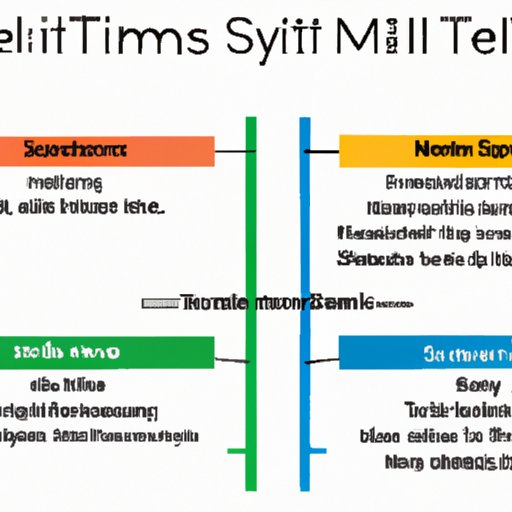
Introduction
My website is about…
Services Offered
- Service 1
- Service 2
- Service 3
Contact Us
“`
III. Best practices for linking CSS to HTML and how to avoid common mistakes
Proper organization and maintenance of code is key to effective linking of CSS with HTML. In this section, we will highlight some best practices and common mistakes to avoid.
1. Proper file structuring
It’s important to have a clear file structure to make it easy to maintain your code. Create a separate folder with the name ‘css’ in your root folder to house all your CSS files.
2. Name your style classes properly
Using descriptive names for your classes makes it easy to target them from your HTML elements. This also improves the readability of your code and helps debug errors.
3. Use a CSS reset
Different browsers render HTML elements differently. Using a CSS reset file ensures that the output is consistent across all browsers.
4. Use comments to organize your code
It’s helpful to include comments in your code to for organization and documentation purposes. Commenting your code makes it easy to understand for other developers who may look at it.
IV. Common CSS linking methods and their pros and cons
There are three methods to link CSS with HTML – external, internal, and inline styles. Each of these methods has its own set of pros and cons, and it is important to know when to use each method.
1. External Stylesheets
An external stylesheet is linked to an HTML document using the link element. An external stylesheet has the following advantages:
– It allows you to keep all your styling information separate from the HTML document, simplifying your HTML code.
– It can be cached by the browser, making the website load faster.
– It enables you to reuse the same stylesheets for several pages.
2. Internal Styles
Internal Styles are styles added within the head tag of an HTML document. An internal stylesheet has the following advantages:
– It allows you to keep the styles closer to the HTML code.
– It provides a greater level of control as you can specify which stylesheets apply to which elements
3. Inline Styles
Inline styles are styles that are added directly to an HTML element e.g. a div or a paragraph. An inline stylesheet has the following advantages:
– It is simple to apply styles
– It is usually applied by creating a new style, making sure it doesn’t apply to other elements
– It is easy to override other styles, because they have a higher level of importance
V. External stylesheets vs. inline styles: Which is best for linking CSS to HTML?
External stylesheets and inline styles both have their own advantages and disadvantages. The choice of which method to use depends on the specific requirements of your project. Here is a comparison between the two methods:
1. Pro of using External Stylesheets:
– They promote the separation of style and content
– They provide a better understanding of the total importance of the styles being loaded, where styles are loaded, and which styles appear to be in contention
– They allow for easy reusability of styles
2. Cons of using External Stylesheets:
– They require an extra HTTP request to load the stylesheet
– They can be frustrating to manage when working with multiple stylesheets and larger websites.
– If the user is on low-bandwidth, or experiencing a slow internet connection, it may not be ideal.
3. Pro of using Inline Styles:
– If you have a small number of styles that need to be applied to a specific element, inline styles are a quick and simple way to achieve that.
– Inline styles are applied directly to the element, so they take precedence over any external style sheet code, and may be particularly useful as an override
4. Cons of using Inline Styles:
– They can make the document code messy and less maintainable
– They are not scalable nor reusable
VI. Debugging your CSS link: Tips and tricks for resolving common linking issues
When linking CSS with HTML, several issues can arise. Here are some common problems that developers encounter, along with some troubleshooting tips:
– If the stylesheet does not load or render, double-check the file path.
– It’s important to ensure that the CSS file is in the correct directory and the path to the file is correct, or else the CSS file won’t load.
– Check for case sensitivity in file names.
– Ensure that the names of your HTML and CSS files are spelled correctly, including capitalization.
– Ensure that the stylesheet is valid CSS syntax – It’s good practice to check for correct syntax to avoid errors.
– Make it easy to read and ensure that there are no syntax errors.
VII. Advantages of using CSS preprocessors for linking CSS to HTML documents
CSS preprocessors allow for better functionality while linking CSS with HTML documents. They provide a precompilation step that removes the burden of repetitive boilerplates. Here are some advantages of using CSS preprocessors:
– Better organization
– Faster Development
– Code Reusability
– Easier Maintenance
VIII. Conclusion
In conclusion, proper CSS linking is crucial in web development as it enhances readability, organization, and performance of your website. This article has provided a comprehensive guide to linking CSS to HTML, along with best practices, common methods, and troubleshooting tips. As you continue to develop your web projects, applying the tips and tricks discussed in this article will help you build better websites.





